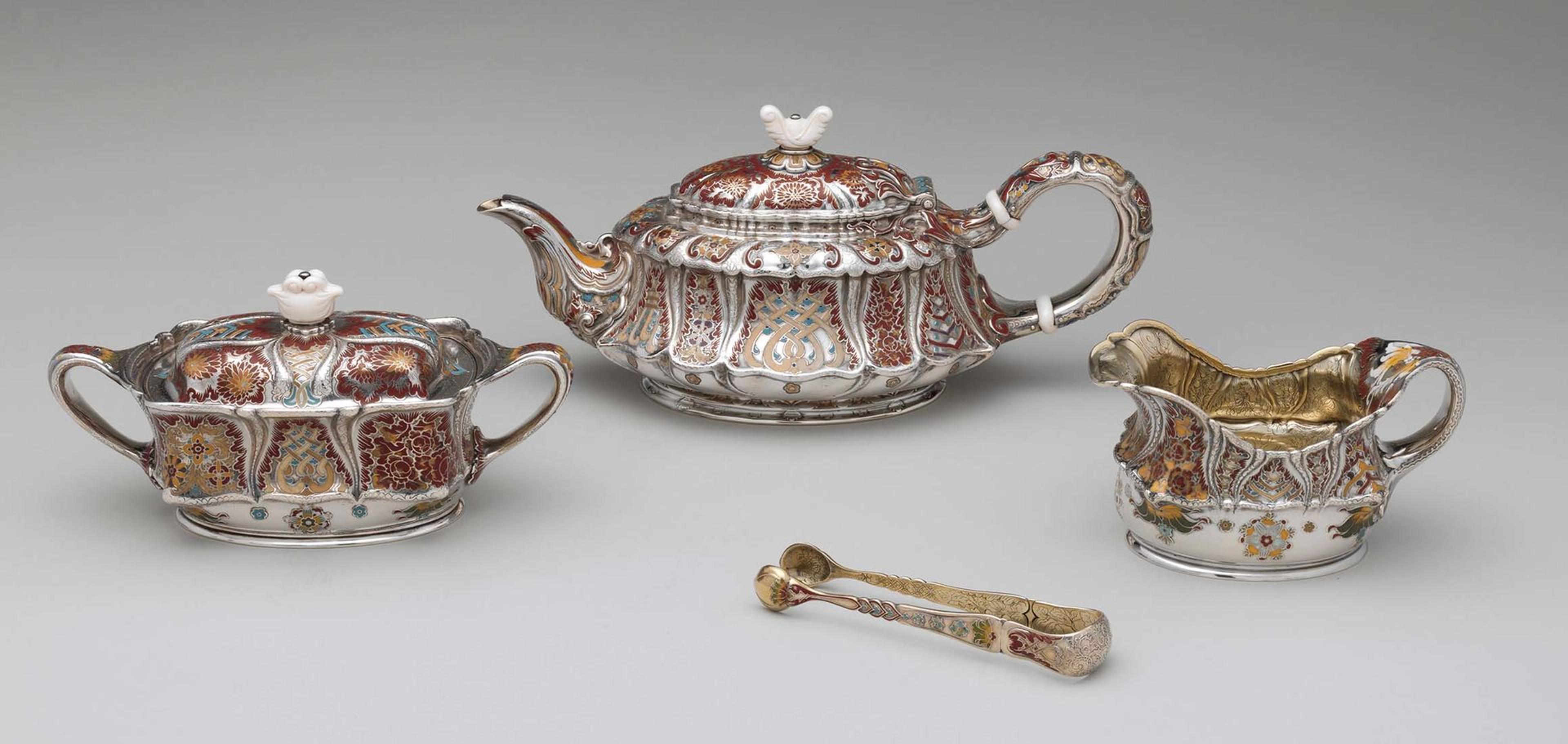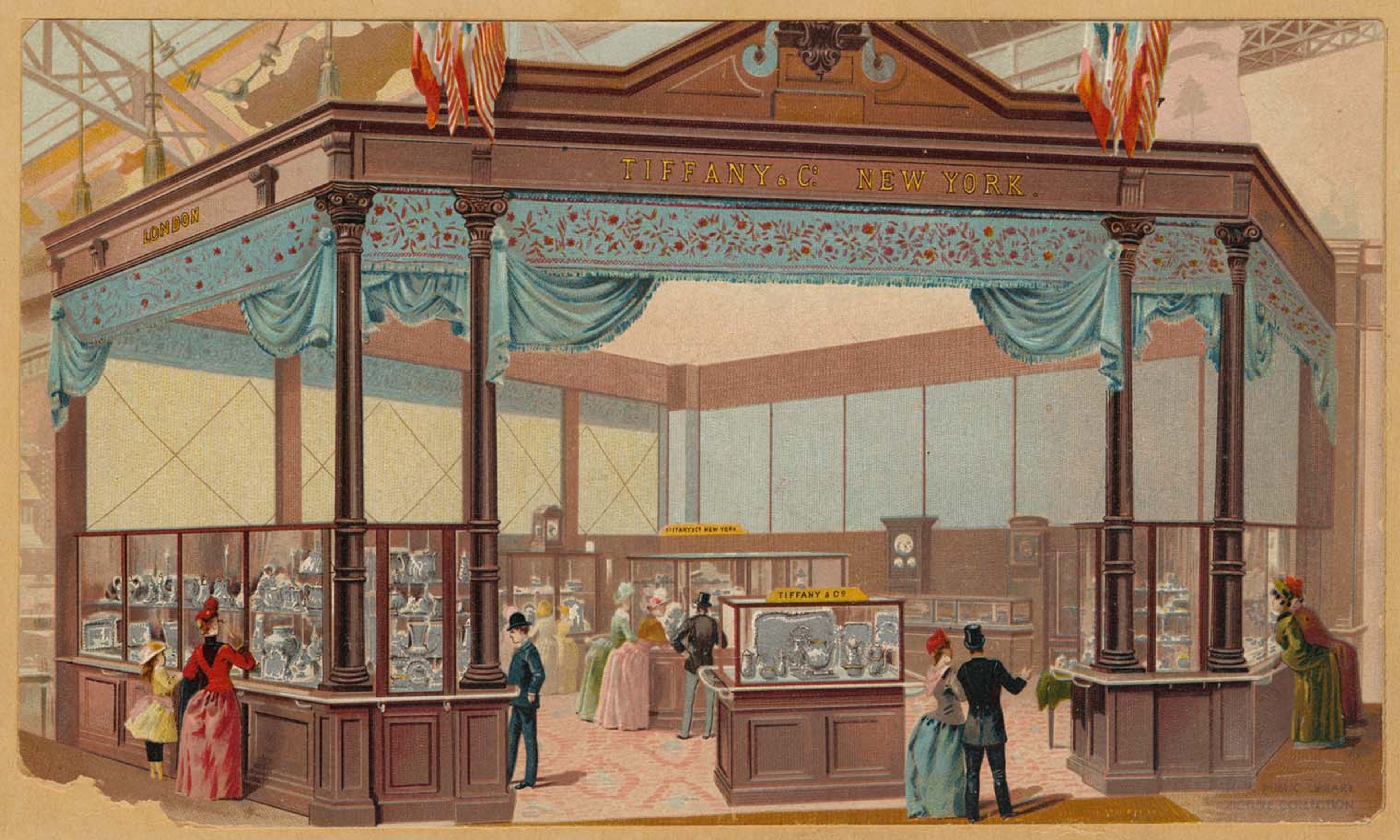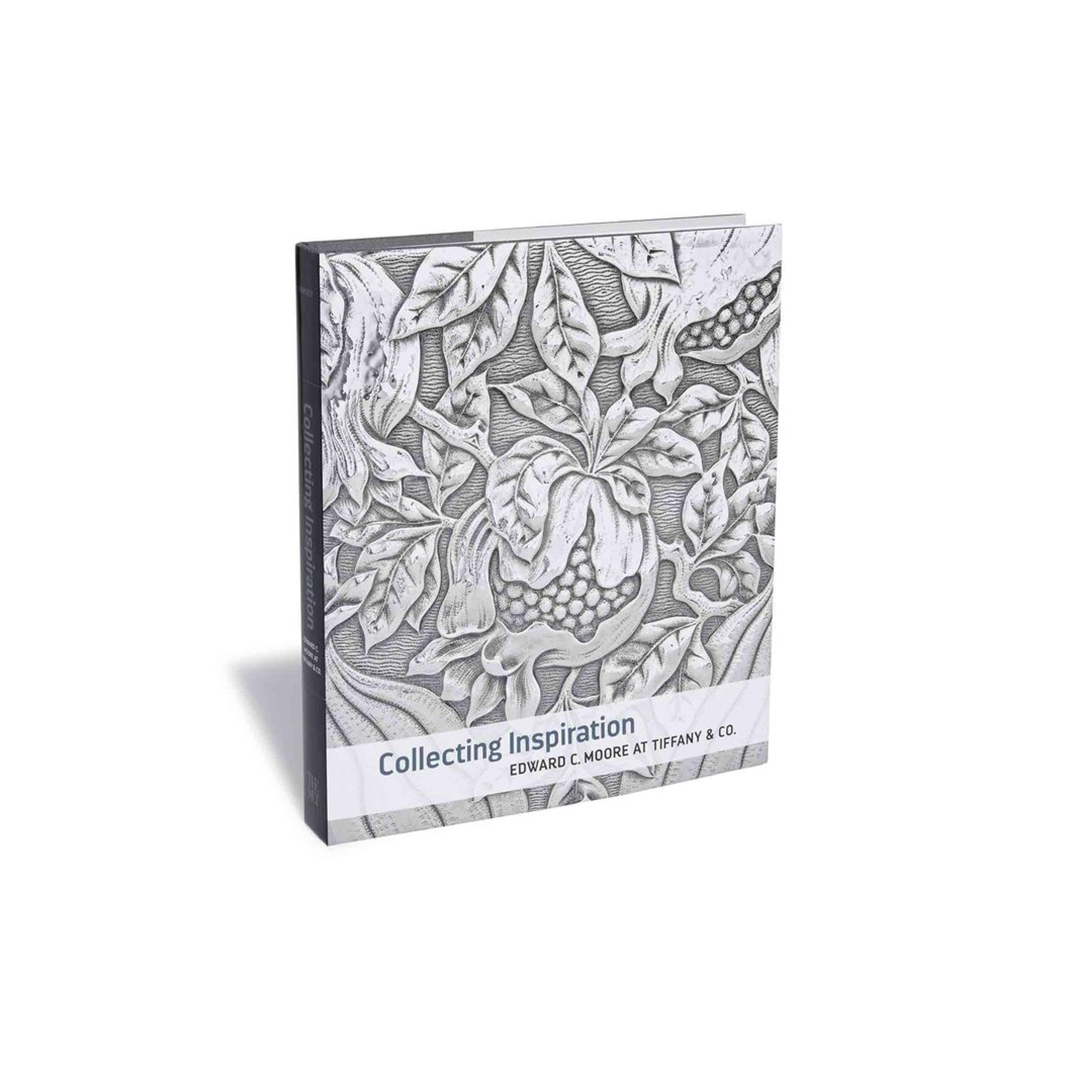Edward C. Moore—a silversmith, designer, and prodigious collector—led Tiffany & Co. to unrivaled success during the late nineteenth century. Moore used exceptional objects from around the world as inspiration for Tiffany’s innovative silver designs. Collecting Inspiration: Edward C. Moore at Tiffany & Co. presents the never-before-told story of Moore, focusing on his life, collection, and lasting influence on artistic production and The Met.
I spoke with curator Medill Higgins Harvey from The Met’s American Wing about her goals for this publication, Moore’s influence, the relationship between Moore and The Met, and how Kickstarter might be the new world’s fair.
Chloe Kim:
Moore’s influence on Tiffany & Co. and The Met is not well known. Collecting Inspiration is the first catalogue on Moore and his collection. First impressions are always very important. What were your goals for this publication and how did you decide what to include in this first book on the collector and designer?
Medill Higgins Harvey:
Selecting the objects to tell Moore’s story was a long, meticulous, and interesting process. Nobody had thoroughly explored his story, so to begin with, I wanted to clarify who he was, where he came from, and his role at Tiffany and The Met. Under Moore’s direction, Tiffany & Co. began setting taste and style both domestically and internationally while innovating in ways that no producer of American silver ever had. I started with a question: “Why did that happen?” I wanted to make sure that we produced a publication that answered that question in a nuanced way. As I started to unpack the collecting history, it became clear that the dialogue between his work and the collection was the way to bring Moore’s artistic process to life.

Selection of objects from the Edward C. Moore Collection. The Metropolitan Museum of Art, New York, Edward C. Moore Collection, Bequest of Edward C. Moore, 1891 (91.1.2155, .572, .173, .488, .1199, .510, .1220, .1600, .116, .2094, .1204, .1230, and .490)
When the authors and I were choosing which objects to include to tell that story, the process was very different for each part of his collection. We wanted to represent the varied decorative vocabularies, the object types, the range of quality, and the range of media in all areas of his collecting. Trying to reflect the scope, scale, and nature of the collection guided the selection. Some objects won out over others because of their connection to the Tiffany & Co. silver objects, but even though the authors and I were eager to show those connections, it was also important to tell the story of Moore’s collection through the history of connoisseurship and scholarship. Some of the curators involved in the book knew nothing about Moore before I asked them to participate in the project. They were astounded by the breadth and depth of his holdings in their departments. Telling the stories of Moore and his collecting, but also of how we have understood and experienced these works over the course of their time at The Met, has been a fascinating part of the project.
Kim:
In the book you explain that Moore drew inspiration from his global art collection, and you emphasize that Tiffany & Co. was able to implement new practices in silversmithing through techniques the designers developed after studying these works of art. How did Moore's collection and designs influence—and perhaps still influence—both Tiffany & Co. products and silverware production worldwide?

Magnolia Vase. Tiffany & Co., 1893. Silver, enamel, gold, opals, 30 7⁄8 x 19 1⁄2 in. (78.4 x 49.5 cm) marked: TIFFANY & Co/11168 MAKERS 3137/STERLING SILVER/T/[Tiffany globe mark for the World’s Columbian Exposition] (on underside) The Metropolitan Museum of Art, New York, Gift of Mrs. Winthrop Atwill, 1899 (99.2)
Harvey:
Through careful study of the diverse array of colors, patterns, and shapes represented in his collection, Moore established a creative, hybrid approach to design. He synthesized different ideas, iterated, and created novel works of art. That in itself is fascinating and had enduring impact beyond Moore’s time at Tiffany.
The incorporation of non-Western vocabularies, asymmetrical compositions, and different senses of planar space in Tiffany designs was born out of looking at these objects in Moore’s collection. Perhaps more interesting—and certainly something that has never been addressed in the way it is explored in this publication—are the technical innovations that enabled these new approaches to design.
Moore was passionate about colorful glass, textiles, and ceramics. He used all of these works to push himself and his team to think in totally new ways about how to introduce different colors and tones to metal objects. Moore’s team was especially inspired by Asian metalwork. They studied examples in Moore’s collection to understand the metallurgic makeup of the various browns, bluish blacks, and black hues. Moore and his team also looked at Asian lacquerware and developed amazing technical innovations to replicate the vibrant colors in silver.
These discoveries relied very heavily on our outstanding Departments of Scientific Research and Conservation. Through scientific analysis of these objects, we found that they followed formulas in Tiffany & Co.’s technical manuals precisely, indeed to the letter. They meticulously developed and adjusted the formulas and processes in order to replicate, not just the mixed metalwares that Moore collected, but also the riot of color and texture that was manifest in his collection.
Kim:
The technical manuals you just mentioned are among the many little-known and unpublished archival materials included in this publication. The book also showcases works from several different areas of the Museum that are referenced in these archival resources, what insights into the Museum’s collection can be gained from these texts?

Tea Set (Tête-à-Tête). Tiffany & Co., 1886. Silver, silver gilt, enamel, ivory, Teapot: 4 3⁄4 x 10 7⁄8 x 5 3⁄16 in. (12.1 x 27.6 x 13.2 cm); creamer: 2 7⁄8 x 5 3⁄8 x 3 1⁄8 in. (7.3 x 13.7 x 7.9 cm); sugar bowl: 3 5⁄8 x 7 1⁄2 x 3 3⁄4 in. (9.2 x 19.1 x 9.5 cm); sugar tongs: 5⁄8 x 5 in. (1.6 x 12.7 cm) marked: TIFFANY & Co/8473 M8148/STERLING-SILVER (on underside of teapot); TIFFANY & Co /8473 M8147/STERLING-SILVER (on undersides of creamer and sugar bowl) The Metropolitan Museum of Art, New York, Gift of a Friend of the Museum, 1897 (97.1.1–.4)
Harvey:
The archival resources certainly allow us to understand the Tiffany silver in our collections in an entirely new and different way. We studied how these works were made, and how they originally appeared because over time, metal surfaces can change. We also learned a lot about other works in our collection from these journals and archives. As we pieced together our research to understand the context in which Moore was collecting, we began to understand the early history of The Met’s collections in a very different way. In many cases, Moore was collecting non-Western material earlier than most of his fellow American collectors. He really was on the vanguard, and the fact that Tiffany was doing business and exhibiting in England and Paris put him in contact with dealers and collectors in other parts of the world.
Kim:
This publication celebrates one of the Museum’s first gifts and was originally conceived as part of The Met’s 150th anniversary celebration. When I attended the Making The Met exhibit in late 2020, I was really drawn to the early Tiffany & Co. works displayed. In the book you mention that The Met and Moore had the same desire to make art accessible to the public; could you elaborate on these shared goals and the relationship between Moore and The Met? Did The Met’s relationship with Moore lead to even more connections to Tiffany & Co.?

The Edward C. Moore Collection at The Metropolitan Museum of Art, 1907. The Metropolitan Museum of Art, New York
Harvey:
What makes this publication so meaningful is that Moore was totally committed to the idea that access to art of all types was critical to educating and inspiring artists. Moore’s collection was assembled for his staff as part of a prevailing nineteenth-century notion that the quality of our national production depended on the creativity of our workforce. Moore wanted to give these objects to a museum because he felt it was vital that the work be accessible to members of the public who had historically not had access to such works. The strong educational mission of The Met is precisely why that collection came here. These shared educational aims are at the core of the story of Moore’s collection and of his relationship with the Museum. It was the beginning of an intentional effort to develop contemporary decorative arts by building an inspirational museum collection.
Kim:
Your essay talks about Tiffany & Co.’s use of world’s fairs to boost public engagement, promote products, and discover techniques abroad to inspire new designs. Could you talk more about the importance of world’s fairs in Tiffany & Co.’s success? Is there a modern, digital age equivalent to these international events that prompted so much cultural exchange?

Tiffany & Co., New York, Exposition Universelle, Paris, 1889. Wallach Division Picture Collection, The New York Public Library
Harvey:
The first part of your question is easier for me to answer. The world’s fairs were essential to Tiffany’s success. Edward Moore started as a local silversmith who was contracted by various different shops, Tiffany being one of them. Tiffany brought him in house, recognizing his skills and the potential market for silverware. Up to that point, American silver had largely followed European models, but as Moore and others were able to go to the fairs to exhibit Tiffany works, they recognized and seized the opportunity to make a statement and market this American company as a cutting-edge creative force on a world stage.
Tiffany would invest incredible amounts of creative energy into mounting the displays at these fairs, which became centerpieces of their marketing and promotion strategies. The public attending these fairs was a much broader swath of society than those who typically were able to see art firsthand, and the success of its fair displays drove sales of all of Tiffany’s products. The fairs also allowed Moore and his team to experience artistic and industrial production from around the world. For Moore, the world’s fairs fueled his collecting and his interest and engagement with artistic production of world cultures while also furthering his goals of establishing Tiffany’s customer base all over the world.
The second part of your question reminds me of when I first proposed this exhibition and publication. At the time, our Design Department suggested that we hold the exhibition in May to coincide with a big design conference in New York. They immediately recognized this topic’s resonance with international gatherings of designers happening today. In terms of digital platforms, I think there are infinite ways to create this global exchange. On Instagram, you can see and share designs and ideas from all over the world.
View this post on Instagram
A post shared by The Metropolitan Museum of Art (@metmuseum)
Is Instagram the digital age’s world’s fair? Follow the link above to The Met's Instagram account.
Kim:
I completely agree that Instagram is an amazing way to share designs quickly and globally. I think Kickstarter might also be a good modern-day equivalent as a place where young entrepreneurs or start-ups can gain public recognition and try to accumulate funds for their project. Or on a much smaller scale, I think even the flea markets that we have in New York where small shops can come and display their products for the public is reminiscent of the world’s fair experience.
Harvey:
I think Kickstarter is a brilliant equivalent, and if Moore had been able to have a Kickstarter account when promoting his successful attempts to make copper turn red, the marketing of this new technique probably would’ve been a lot less labor intensive!
